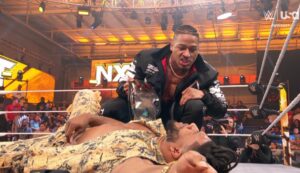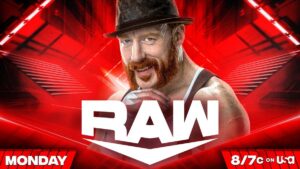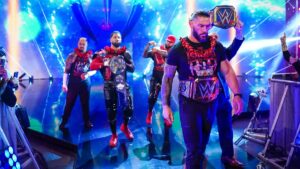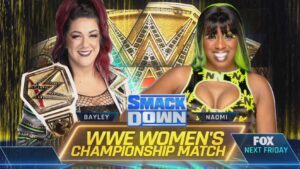It was 15 years ago today that the wrestling world lost second generation wrestler Curt Hennig, a former World Champion, Intercontinental Champion, Tag Team Champion, Four Horseman, West Texas Redneck – but to the majority of us, he was simply Perfect.

Celebrating The Life of Curt Hennig
Larry ‘The Ax’ Hennig was one of the most feared brawlers in professional wrestling, from the 1960s through the mid-80s, tearing up Verne Gagne‘s AWA in his home state of Minnesota for 36 years. In 1976, his 18-year old son Curt was graduating from Robbinsdale High School in Minnesota, longing to become a wrestler like his dad. And it wasn’t just Curt – his graduating classmates Richard Rood, Tom Zenk and Dean Peters also carried those same dreams (they would become “Ravishing” Rick Rude, “Z-Man” Tom Zenk and Brady Boone/Battle Kat in later years). Robbinsdale High School had a wrestling legacy afterall – it was the alma mater of Verne Gagne and his wrestling son, Greg Gagne, and future classes included Nikita Koloff and Barry Darsow (Demolition Smash, Repo Man).

When Curt finally decided to enter the world of professional wrestling, he trained with his dad, Verne Gagne and “Playboy” Buddy Rose, making his professional debut in 1980. He began with the AWA, although he began as a low card star (based on his famous dad), but was primarily enhancement to the bigger names. He was also used by the WWF at the same time, again as a low card face, with small feuds with the likes of Johnny Rodz and Baron Mikel Scicluna. He continued working with the two through 1983, before heading over to Japan to work with NJPW, where he teamed with Bobby Duncum in the World Tag League, as well as pairing with Andre The Giant.

In 1984, he returned to AWA and became one of the company’s bright young stars. No longer was he feuding at the bottom of the card. Now he was challenging the likes of Billy Robinson, Nick Bockwinkel, and The Road Warriors at the top of the card instead of the bottom. The following year he was paired with a big man from Maryland named Scott Hall and the two became one of the AWA’s top tag teams – in 1986, the duo captured the AWA World Tag Team Championships. Hennig returned to Japan as well, but this time went to All-Japan, entering the 1985 Real World Tag League (with Nick Bockwinkel as his partner) and again in 1987 by himself.

In May of 1987, Curt finally escaped from the tag team shadows and beat his former friend and adversary (and arguably AWA’s greatest World champion) Nick Bockwinkel to capture his one and only World title, the AWA World Heavyweight Championship. As the new face of the AWA, Hennig would hold the belt for over a year (373 days). But during Hennig’s World title reign, the AWA began to slip further and further away from the race for dominance in the US market, behind the exploding WWF and the NWA collective that Jim Crockett was amalgamating (that would eventually become WCW). In an effort to form an alliance of his own to take on the WWF and NWA, Gagne merged briefly with Jerry Jarrett‘s CWA, allowing Jerry “The King” Lawler to defeat Curt Hennig for the AWA World title at a CWA event. With Gagne choosing to go with an aging Lawler over the younger Hennig – and AWA’s lifeline dwindling – Hennig finally made the choice to head back to a previous employer.
https://www.youtube.com/watch?v=8iK7vRYeY3U
Two months after losing the AWA World title to Lawler, Hennig was up in Stamford, once again working for a McMahon and the WWF, only this time it was Vince McMahon Jr. instead of Senior. Vince Jr. had a vision for the new WWF that was well in place and had become a pop culture juggernaut, leaving both the NWA and the AWA in its dust. And Curt Hennig’s brash attitude, undeniable charisma, and seamless in-ring ability was a perfect fit for McMahon’s WWF (no pun intended). He worked some house shows under his real name, but once the vignettes for his debut began to air, he had found a new moniker. He was now known simply as “Mr. Perfect“.

He worked a few house show circuits with some familiar faces from the AWA, in Jim Brunzell and B. Brian Blair (collectively known as The Killer Bees in the WWF) before making his WWF Pay-Per-View debut at Survivor Series ’88 as a member of Bobby “The Brain” Heenan‘s Heenan Family team (which also included Andre The Giant, Harley Race and his old school chum, Rick Rude). He continued to work house shows and TV tapings, feuding with the likes of Bret “Hitman” Hart, Brutus “The Barber” Beefcake and Jimmy “Superfly” Snuka, before he hit the main event. He spent the end of 1989 and beginning of 1990 feuding at the top of the card with WWF World Heavyweight Champion Hulk Hogan.

When Ultimate Warrior defeated Hulk Hogan for the WWF World title at WrestleMania VI in Toronto, Canada, it opened up a new title that Mr. Perfect was better suited to challenge for. The WWF World title was always more of the big focus point, but rarely was it the belt that had the best matches. That was reserved for “the workhorse” title, the Intercontinental Championship. With Warrior relinquishing his Intercontinental belt after defeating Hogan, a tournament was created, with Perfect defeating Tito Santana in the finals to become the new Intercontinental Champion. But he continued to work the main events as well, often facing Ultimate Warrior for the World title as well. He held the IC title for 126 days, before losing it to another second generation wrestler coming in from a failing promotion – Kerry Von Erich had arrived from WCCW and the two feuded over the title, with “The Texas Tornado” winning it that August. But it took less that three months for Hennig to win it back and hold it for another 280 days. It was during that second reign, that Hennig had arguably his most memorable feud, against Bret “Hitman” Hart, who was now a full-fledged singles wrestler, away from his own tag team trappings of the Hart Foundation. But unbeknownst to most fans, he’d been battling building injuries, and shortly after losing the belt to Hart, Hennig was forced to retire from severe spinal injuries.
But Hennig spent the next year recuperating and rehabbing the injuries, but he remained on television, as a commentator and as a manager, working as Ric Flair‘s “special consultant” when Flair made the jump to the WWF in 1991. By 1993, he had recovered significantly and began to work matches once again, although on a far limited schedule than his previous push. With concerns over his health, WWF rarely pushed him with the same magnitude as before and in 1996, Hennig left the WWF to join rival promotion WCW.

Hennig had somewhat of a renaissance with WCW (in comparison to his final years with the WWF), becoming a Four Horseman before turning on Flair and joining the nWo. He became a WCW US Champion and World Tag Team Champion (with Barry Windham), lasting four years with WCW before leaving in 2000, just before it went under.
In 2002, he made a surprise return to the WWE as an entrant in the Royal Rumble, which parlayed into another run with company. It only last a few months, before an incident on an international flight caused his release. He worked for Impact Wrestling for the next year, before the tragic news hit the wrestling world on February 10, 2003. That Curt Hennig had been found dead in a hotel room, at the age of 44.
https://www.youtube.com/watch?v=H8oL3pbYqew
Widely considered one of the greatest in-ring talents of the 1980s, whose career was cut short and hampered by injury, Curt Hennig was larger than life and a joy to behold in the ring. When the bell rang, he was simply perfect.







